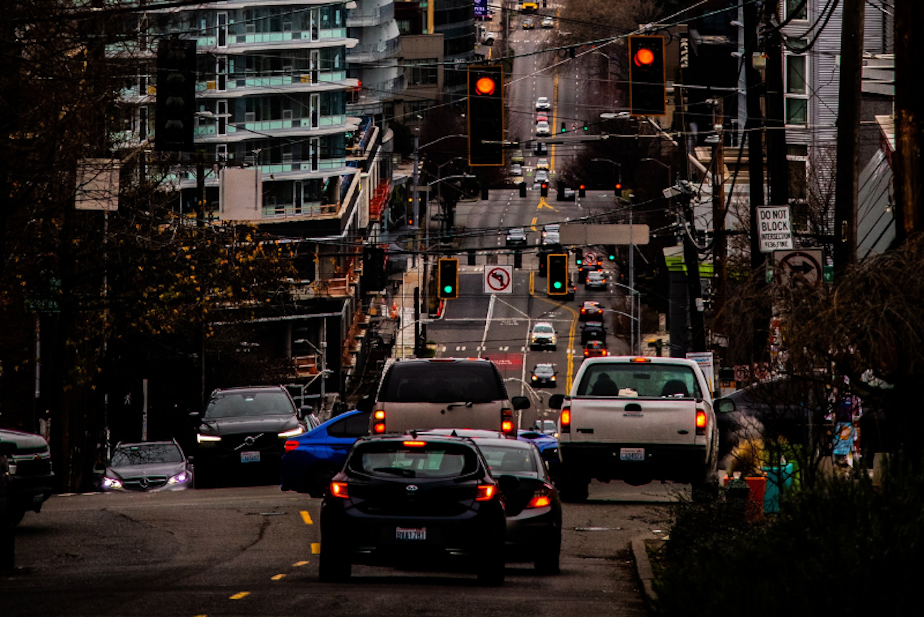The challenges of designing safer Seattle streets

After "a particularly fatal year," Seattle is expected to receive $25.7 million from the U.S. Department of Transportation to prevent traffic fatalities.
On Sunday, a hit-and-run driver on Capitol Hill critically injured an 80-year-old woman who later died from her injuries. The driver hit the woman, who has not yet been publicly identified, as she was walking through a crosswalk at East Madison Street, according to the Seattle Police Department.
Her death comes two weeks after that of 23-year-old Jaahnavi Kandula, who was killed in South Lake Union after a Seattle police officer struck her while speeding to an emergency call.
You might also remember Gan Hao Li, who was struck by a car while biking in SoDo last May. Li died two weeks shy of his 74th birthday.
In an interview with Soundside, U.S. Department of Transportation Deputy Secretary Polly Trottenberg called it "a particularly fatal year" for Washington state, in reference to an alarming trend: Last year, 745 people died on Washington roads — the most since 1990.
The U.S. Department of Transportation recently announced grants aimed at curbing deaths on Seattle’s streets. The city is set to receive over $25 million for roadway safety.
Sponsored
Most of that money will go to the SoDo neighborhood. Since 2019, almost half of all fatal collisions in the city have occurred in Seattle City Council District 2, which includes SoDo.
The grant includes money for four miles of protected bike lanes, more than a mile of new sidewalks, and treatments for existing roads and intersections, like speed bumps and new signs.
It’s been a year since the U.S. Department of Transportation announced a new, nationwide roadway safety strategy. They’re working towards a goal of zero fatalities on U.S. roads.
"It’s really a paradigm shift," Trottenberg said. "We have traditionally invested our dollars with state [departments of transportation] more focused on state highways. And for the first time, we're making these kinds of investments in local projects all over the country."
Seattle has its own plan to reach zero fatalities on its roadways by 2030 but progress toward that "Vision Zero" goal has been elusive. In 2021, the city recorded 30 roadway deaths — the highest amount since 2006, according to the Seattle Times.
Sponsored
Vision Zero has it's roots in Sweden, where multiple levels of government were able to successfully bring down traffic fatalities through changes in street design.
"The basic idea behind Vision Zero is that by using a more systems-driven approach to managing streets, and instead of relying just on managing behavior of individual road users, you can have a bigger impact on traffic safety across the entire transportation network." said Jenny O'Connell, who leads the Road Safety and Vision Zero work at the National Association of City Transportation Officials.
O'Connell said that systems in the United States are more complicated; traffic fatalities often happen on busy arterials, which might be owned by state departments of transportation. There are also recommendations and codes from the federal government that encourage engineers to post higher speed limits.
There's also a culture of accepting traffic fatalities "as an unfortunate inevitability on our streets," according to O'Connell.
"I think that that has excused away a lot of speed and capacity oriented decision-making on our streets, both in cities and out of cities," she added.





